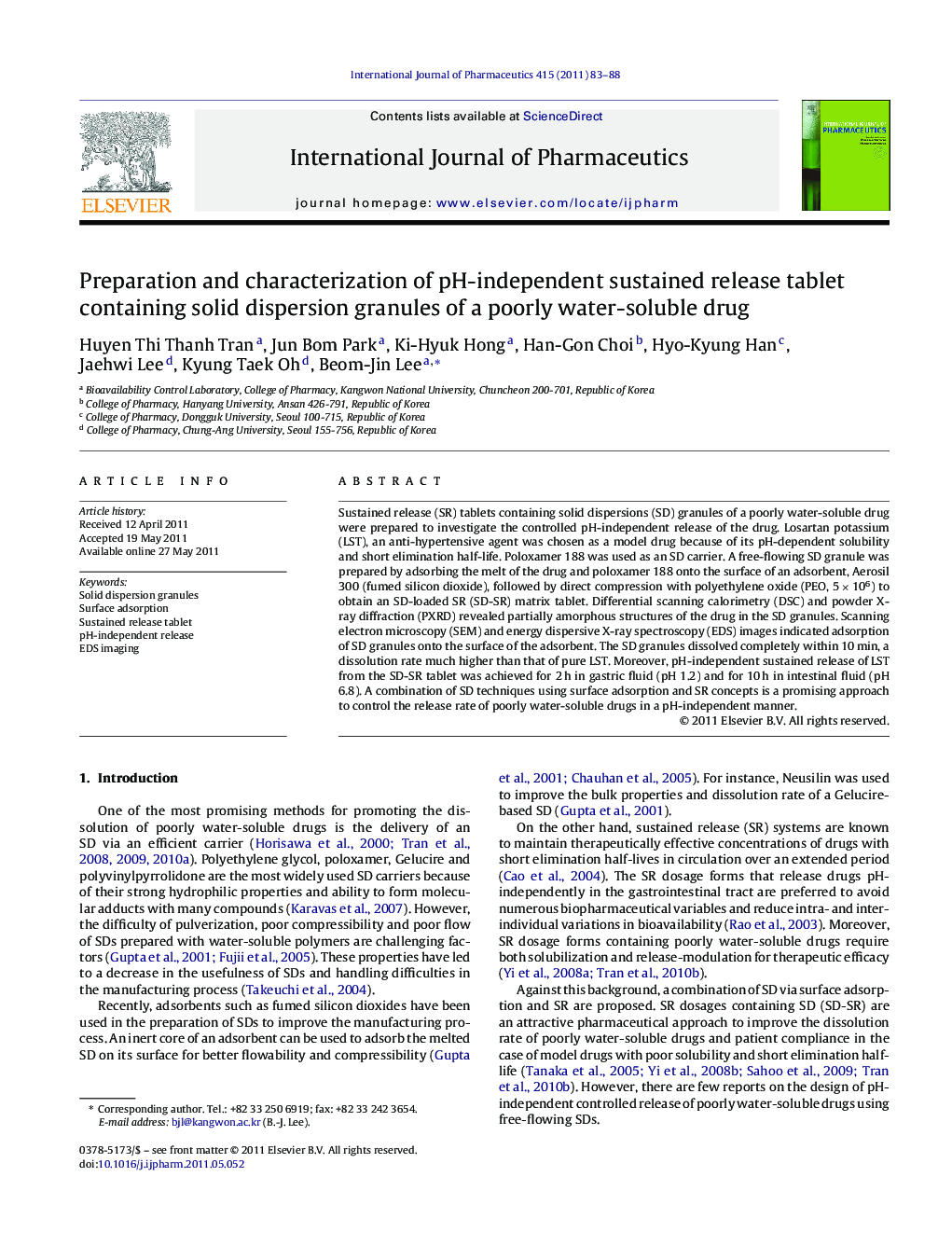| Article ID | Journal | Published Year | Pages | File Type |
|---|---|---|---|---|
| 2503519 | International Journal of Pharmaceutics | 2011 | 6 Pages |
Sustained release (SR) tablets containing solid dispersions (SD) granules of a poorly water-soluble drug were prepared to investigate the controlled pH-independent release of the drug. Losartan potassium (LST), an anti-hypertensive agent was chosen as a model drug because of its pH-dependent solubility and short elimination half-life. Poloxamer 188 was used as an SD carrier. A free-flowing SD granule was prepared by adsorbing the melt of the drug and poloxamer 188 onto the surface of an adsorbent, Aerosil 300 (fumed silicon dioxide), followed by direct compression with polyethylene oxide (PEO, 5 × 106) to obtain an SD-loaded SR (SD-SR) matrix tablet. Differential scanning calorimetry (DSC) and powder X-ray diffraction (PXRD) revealed partially amorphous structures of the drug in the SD granules. Scanning electron microscopy (SEM) and energy dispersive X-ray spectroscopy (EDS) images indicated adsorption of SD granules onto the surface of the adsorbent. The SD granules dissolved completely within 10 min, a dissolution rate much higher than that of pure LST. Moreover, pH-independent sustained release of LST from the SD-SR tablet was achieved for 2 h in gastric fluid (pH 1.2) and for 10 h in intestinal fluid (pH 6.8). A combination of SD techniques using surface adsorption and SR concepts is a promising approach to control the release rate of poorly water-soluble drugs in a pH-independent manner.
Graphical abstractpH-independent release of drug was achieved from sustained release tablets containing solid dispersion granules in gastric fluid (pH 1.2) for 2 h and subsequently in intestinal fluid (pH 6.8) for 10 h. Energy dispersive X-ray spectroscopy (EDS) images indicated the uniform distribution of Cl (LST, Aerosil 300) and Si (Aerosil 300) in the SD granules.Figure optionsDownload full-size imageDownload as PowerPoint slideHighlights► A free-flowing solid dispersion (SD) granule was prepared by adsorbing the melt of the drug and poloxamer 188 onto the surface of an adsorbent, followed by direct compression with polyethylene oxide to obtain an SD-loaded sustained release (SD-SR) matrix tablet. ► Scanning electron microscopy (SEM) and energy dispersive X-ray spectroscopy (EDS) images indicated adsorption of SD granules onto the surface of the adsorbent. ► The SD granules dissolved completely within 10 min, a dissolution rate much higher than that of pure LST. ► A pH-independent sustained release of LST from the SD-SR tablet was achieved for 2 h in gastric fluid (pH 1.2) and for 10 h in intestinal fluid (pH 6.8).
